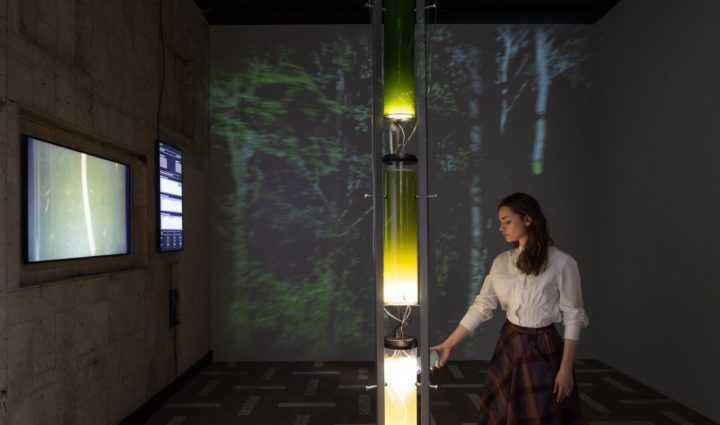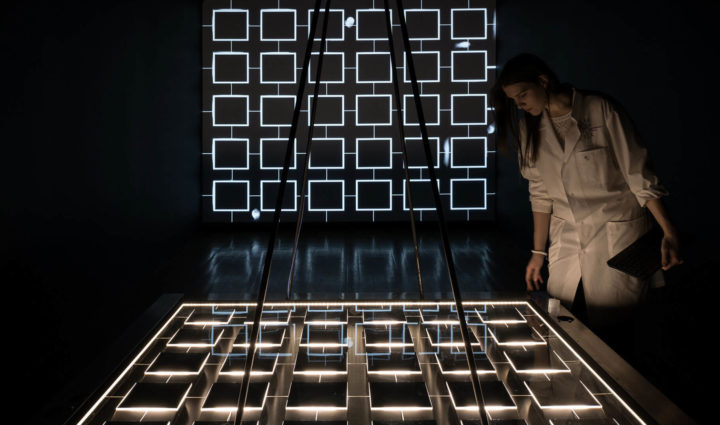Artist-talks with Nina Rajcic and John McCormack
An online Artists-scientists talks with Australian artist Nina Rajcic and John McCormack, the director of the creative technology research center SensiLab (Monash University, Australia), took place in the framework of the exhibition “May the other live in me”.
The conversation turned out to be very interesting: John showed SensiLab projects, Nina talked about her research and her artwork at the exhibition “May the Other Live in Me”. There are main points of the discussion below, and you can watch the video for the full version.
- Through interdisciplinary approach SensiLab explores the undiscovered opportunities of technology and how technology affects society. SensiLab has four main research themes: Creative AI, Media Futures, Programmable Matter, Sensory, Interactive Space where you can get feedback not only through the visual channel.
- Nina Rajcic explores the relationship between man and machine. Technology is increasingly embedded in our everyday life. Social networks, virtual reality, bioimplants, brain-computer interfaces make us think about who we consider being a user, and whether there is any significant line between man and machine.
- Nina Rajcic explores the relationship between man and machine. Technology is increasingly embedded in our everyday life. Social networks, virtual reality, bioimplants, brain-computer interface make us think about who we consider to be a user, and whether there is any significant line between man and machine.
- Nina’s research is Posthuman rituals. In her work, she tries to design relationships between people and machines that will be interesting, meaningful, unexpected, requiring strong involvement. How do people normalize their usual relationships with technological devices? Nina tries to come up with rituals that will create new meanings.
- The project presented at the exhibition is Mirror ritual. At first glance, this is an ordinary mirror. However, if you approach it, the AI reads your emotions and shows you a poetic text in response. Thus, you have the opportunity to correlate your own emotional state with the interpretation of AI.
- In the modern world, our behavior is more often determined by machines than by our interactions with other people. But who writes these algorithms? In most cases, this is a very small cohort of people working in large technology companies. And what right do they have to do this?
- We have to recognize the fact that there are more and more authors of non-human origin. If we had some fantasies that man is the crown of nature, now they are obviously crumbling. The concept of authorship should be revised, there are all the circumstances for this.






